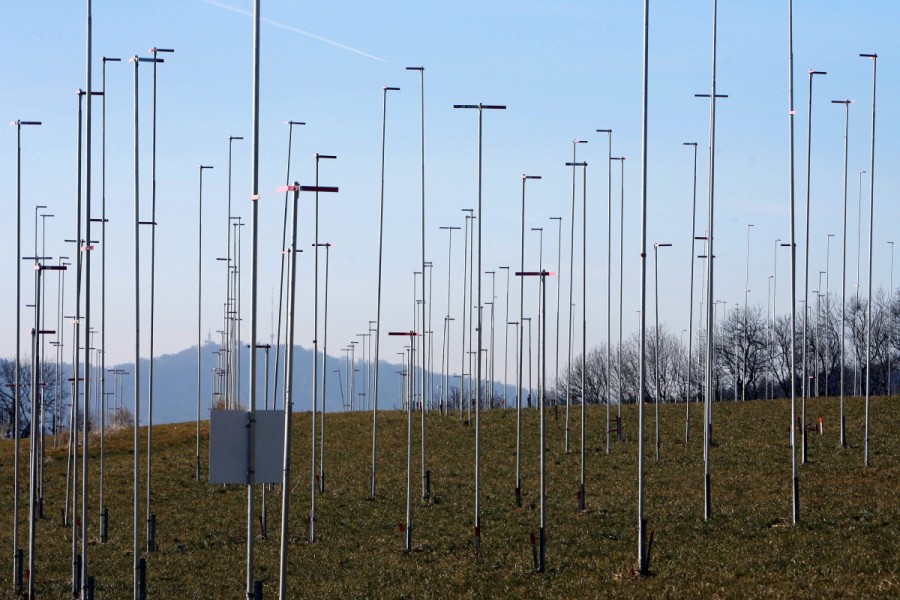
Baugespann to outline the building volume prior to the start of construction Photo: Alessandro della Bella, Zumikon, 2008
Baugespann is a Schweizerdeutsch word for a temporary construction, usually made of wooden poles, erected during the planning process so the community can envisage the impact of a new development. It is a process of making in situ the future construction visible so that community can make a decision if the construction is fitting to their purpose. In 2014, Oxford used the similar method for some of the more controversial projects, yet Switzerland is still the only country in which that method of spatialization of future is obligatory part of the process of obtaining the construction permit. In most of the countries, there is nothing other than papers and drawings announcing an immanent and sometimes radical change to the neighbourhood, until the demolition crews start arriving with bulldozers, the fence is built around the future construction site, and the crane is assembled.
Each construction site starts in violence and erasure with the hope that the future it is bringing will be bright enough for the trauma of beginning to be forgotten. In architecture, construction site is something that happens after the "drawings have left the architect's table." Though some architects are involved in the everyday life of construction site as supervision, with the industrialization and streamlining of construction process, little thought is given to what takes place on a site. This course sees construction site as one of the paradigmatic sites of a contemporary moment, which, when put under the spotlight, enables to make visible what is suppressed, and excluded.
This course unpacks the construction site and encourages students to think critically about the internal and external power dynamics that shape it, and with it the future of societies in which we live. The lenses with which the construction sites will be approached are laws, rules and regulations, demolition, (architectural) competitions, labour (in the architecture), labour (on the construction site), financing and real estate, advertising, and maintenance.
During this course, the students will be expected to produce two types of work. Together as a group we will make "A Critical Construction Report, Graz 2017" together with a keywords section, inspired by Raymond Williams' Keywords - A vocabulary of culture and society. Keywords, through which the key vocabulary of construction and society, localized for Graz would be explored, will form the basis of the individual works by students, which would take a form of a visual essay.
A reader will be distributed on the first session of the course.
A Critical Construction Report, Graz, 2017; Syllabus [pdf]
Harun Farocki, In Comparison (Zum Vergleich), 2009